
Lip Balm: Mocha Java
- Out Of Stock

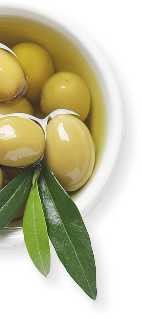
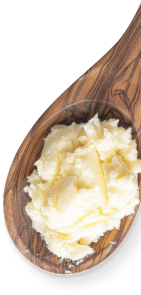

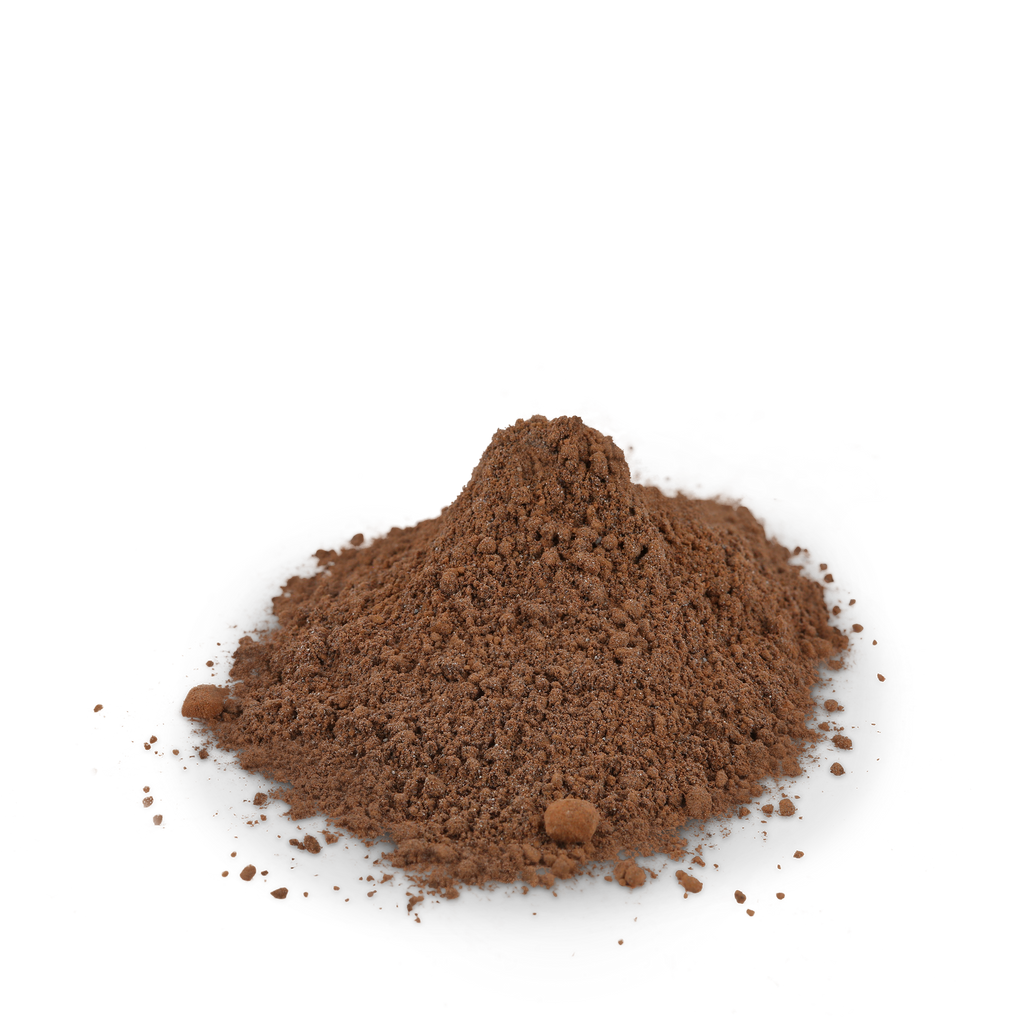





Cocoa Espresso Facial Clay Mask is good for all skin types.
Organic Cocoa and Espresso combine to make a heavenly blend ideal for all skin types! Rich in antioxidants, this clay mask offers the skin a nutrient boost that improves circulation and skin clarity, to restore a healthy glow and leave your complexion feeling fresh. Bentonite Clay rounds out this luscious mask by drawing out oil and impurities to reveal bright, nourished skin.
About 8 to 12 uses per jar
BENTONITE CLAY - Composed mainly of weathered and aged volcanic ash sediments, Bentonite Clay is highly absorbent and perfect for those with oily, acne-prone skin. Known for its purifying abilities, Bentonite extracts oil and dirt, unclogs and shrinks pores, and targets blemishes with its antibacterial properties. It helps tone and firm skin, stimulates circulation, and infuses skin with minerals like calcium, magnesium, potassium, and silicon to help keep skin in good health.
ORGANIC COCOA - Loaded with antioxidants, powdered Cocoa can may limit the production of free radicals that can damage skin cells and speed up the aging process. Because of its high levels of caffeine and theobromine, Cocoa Powder can boost blood flow, which assists in the growth of new cells while tightening skin, reducing puffiness, and creating a youthful glow. Cocoa Powder is chock full of Vitamin E and minerals such as Calcium, Potassium and Zinc, which help promote collagen production and healthy cell development, giving skin a smooth, youthful appearance.
ORGANIC ESPRESSO - Do you love the way coffee gives you a boost in the morning? Well, it does the same thing for your skin! When applied topically, coffee stimulates blood flow, allowing the skin to appear bright, radiant and awake. Because caffeine constricts the skin, coffee gives your complexion a firm, tight appearance, while reducing puffiness. Coffee also has astringent properties, which aid in the shrinking of pores and regulation of sebum. The fine grind of Espresso offers a mild exfoliation that gently sloughs off dirt, oil and bacteria.
Clay Face Masks can be a versatile addition to any skincare regimen. We love our powder clay masks because, unlike the already prepared gel and cream masks, powder masks can be easily customized with extra mix-in ingredients* to provide your complexion with exactly what it needs as the seasons or your facial skin changes over time. The powder formula also stays fresh without preservatives.
*Learn More Blog: Clay Facial Mask Recipes & The Science Behind Them
Creating an application technique that works for your skin will get you one step closer to a beautiful complexion.
Step 1: Start with approx 1/2 to 1 Tablespoon of clay in a clay face mask bowl or any small non-metal bowl.
Step 2: Slowly add 1/4 teaspoon of room temperature or warm water and mix with a non-metal spoon.

Step 3: Continue adding small amounts of water and mixing until a creamy mud-like consistency is reached. Some clays need more water and some need less, so always begin with just a little water and continue to check the consistency. Be sure to mix well to a smooth clay paste.

Step 1: Begin with a clean*, dry face free of make-up, moisturizers, etc. (*Read the FAQ "Should I wash my face before using a facial clay mask?")
Step 2: Using a clay face mask applicator brush or a flat foundation brush, apply the mask to your face. You can apply using any technique that you like. I usually apply a thin first layer and then apply a second thicker layer so the mask is about 1/8″ thick.
If you have combination skin, read our blog about Targeted Application and Multi-Masking
 Step 3: Allow mask to dry for 5-10 minutes. Drying times vary depending on the clay and your skin type. As the clay dries you will feel a pulling and tightening sensation on your skin.
Step 3: Allow mask to dry for 5-10 minutes. Drying times vary depending on the clay and your skin type. As the clay dries you will feel a pulling and tightening sensation on your skin.
For oily skin or a deep cleanse, allow the mask to dry almost completely and then remove--leaving the mask on longer does not add anything beneficial to the treatment and may cause increased redness.
The drying phase is when the clay draws moisture from the surface of the skin.
Thus for sensitive or dry skin or a more gentle cleanse, allow the mask to only dry around the edges of the face and nose and then remove (about 5 minutes).

Step 1: I like to remove a clay mask with warm water and my fingers.
To re-hydrate the mask a bit for easier removal, you can dampen a face cloth with warm water and hold it to the face before removal.
Since this mask is meant to be an exfoliating mask due to the ground espresso, use gentle upward circular motions with your fingers to help to stimulate circulation, polish your skin as the mask is removed.
 Step 2: Gently pat face dry completely with a soft face towel.
Step 2: Gently pat face dry completely with a soft face towel.
After application of a clay mask, you will feel a tightening effect and the skin may even feel a bit itchy at first.
Clay helps increase circulation. As a result, you may experience mild temporary redness for up to 30 minutes.
Step 3: Moisturize! Follow-up with a facial oil or moisturizer
Step 4: Enjoy your super smooth and beautifully fresh skin!
If you are concerned about skin sensitivity do a small skin patch test.
For more detailed information please read our blogs
How To Use Clay Face Masks
Clay Facial Mask Recipes & The Science Behind Them
Multi-Masking and Targeted Application For Combination Facial Skin

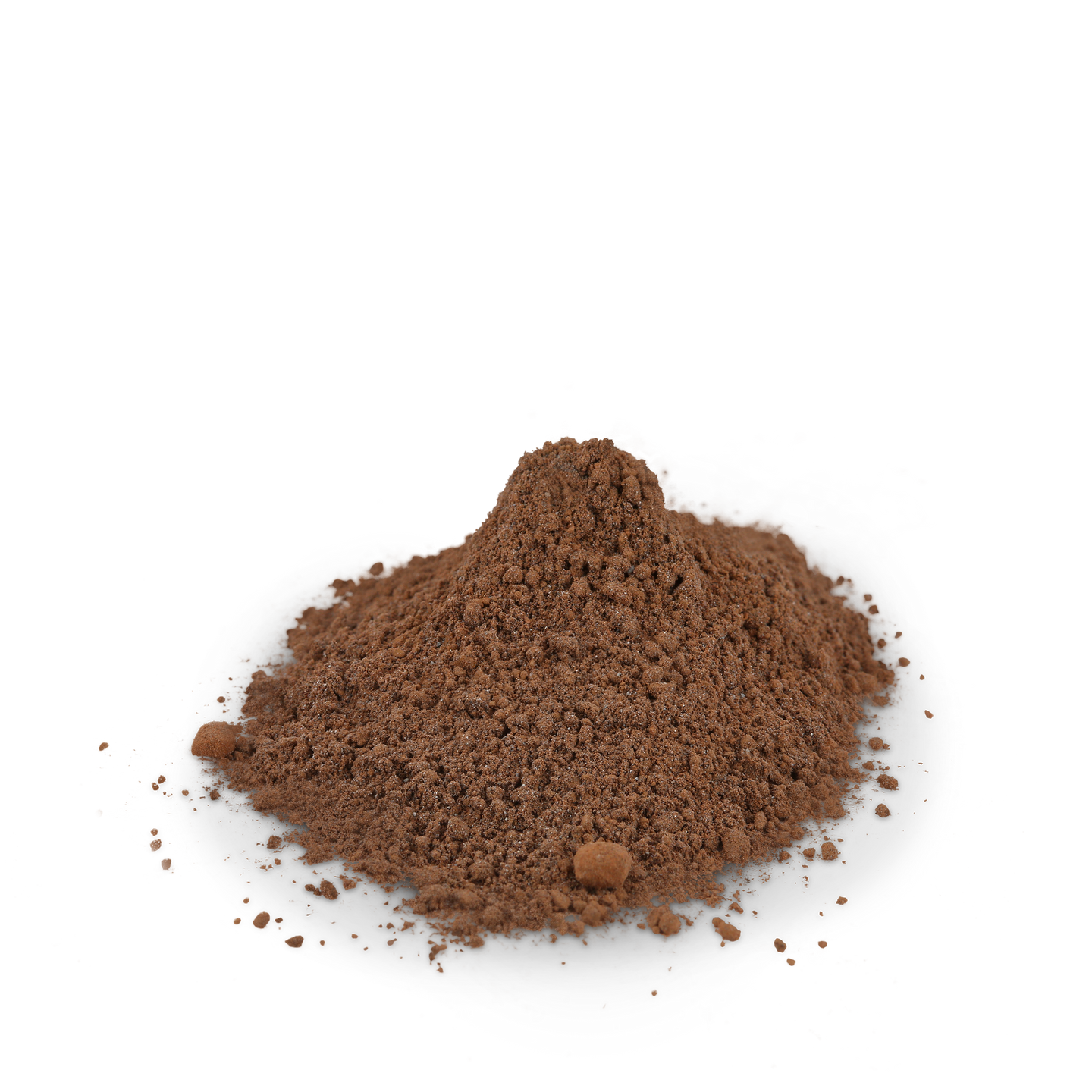
The goal is simple: to Harness the Power & Simplicity of Nature® to cleanse, soothe, heal, and protect your skin and hair!
Our unique formulas rely on moisturizing oils and butters, healing botanicals, and pure essential oils. We choose every ingredient with one end-result in mind….the BEST possible natural skin care for YOU!
 Organic Coffee Beans*
Organic Coffee Beans*
 Organic Cocoa Powder*
Organic Cocoa Powder*
 Bentonite Clay
Bentonite Clay
*Ingredient is Fair Trade certified
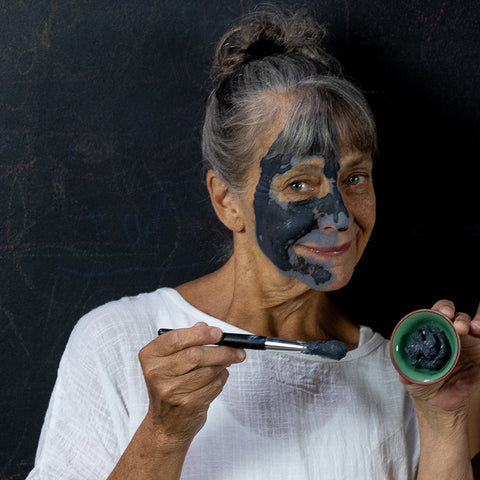 My face likes most of our face masks, including our Adzuki Bean Scrib which I use with yogurt to create a great mask.
My face likes most of our face masks, including our Adzuki Bean Scrib which I use with yogurt to create a great mask.
But our Activated Charcoal Clay Mask is the one that tones, smoothes, and just makes my facial skin glow.
However, based on all the ingredient research, that is definitely not the clay mask I would suggest for any 68-year-old, mature, face with dry skin. But it works for me!
So, finding the right face masks for your skin may take a bit of trial and error.
That being said, clay masks are quite a versatile product. I have written a number of blogs that can help with your "how to use" technique, recipes as well as an understanding of how clay masks do their magic.

How To Use Clay Face Masks
Clay Facial Mask Recipes & The Science Behind Them
Multi-Masking and Targeted Application For Combination Facial Skin
Clay Face Masks can be a versatile addition to any skincare regimen.
While clay powders are very effective when made into a simple paste with water, they can also be mixed with other ingredients for an added benefit or just for fun and experimentation.
There are many ingredients from your kitchen cupboard that can be added to a clay facial mask and each can provide its own possible skin benefits.
However, if you want to take advantage of "the science of clay" then you must understand that the property of clay that allows it to bind with impurities becomes activated by the chemical nature of water.
Understanding the idea that cosmetic clays need to be mixed with "water" to do their "thing," great additions would be hydrosols, teas, or any water-based liquid.
Directions: Simply use the tea or hydrosol in place of the water in your clay mask preparation. As then used as directed.
For a lot more information about adding ingredients to your facial clay mask please read our blog "Clay Facial Mask Recipes & Some Science Behind Them"
 Most of the time the directions included with a clay mask state, "begin with a clean face," but does that mean you need to actually "wash" your face first?
Most of the time the directions included with a clay mask state, "begin with a clean face," but does that mean you need to actually "wash" your face first?
Whether or not to wash your face before using a facial clay is up for debate and you are likely to find a lot of conflicting information online.
There are those who say you should "absolutely" wash your face in to order remove the surface layer of dirt, oil and makeup.
This surface grime can hinder the ability of the active clay ingredients to get into the pores and do their job.
Some also believe that when you apply a clay mask onto unclean skin, you may be trapping all sorts of dirt, bacteria and other impurities and possibly driving them deeper into the facial pores.
Others believe that washing before applying a clay mask may be too drying for those with dry or sensitive skin types.
After washing pores are open and anything you apply will be more rapidly absorbed which may cause more irritation with sensitive skin. If you think about it, moisturizing is best done immediately after washing for that same reason.
In my opinion, the answer to this question really depends on the type or purpose of the mask you are using and your skin type. For example, if you are using a deep cleansing mask for oily or problem combination skin, a fresh wash with warm water opens your pores which prepares your skin for a deeper cleansing experience.
Basically, the same logic holds true for whether or not to shower before or after a clay mask treatment.
Showering Before: Again this method works well with deep cleansing masks for oily and combination skin. The warm water and steam from the shower open your pores.
Showering After: If you have drier skin, you want to apply the mask before taking a shower. The warm shower will actually his help seal in the moisture.
To be honest, I do not wash my face before applying a clay mask. However, I do not wear make-up or use heavy creams and basically, my face simply gets dirty from normal exposure to everyday dirt and pollutants. I have aging dryish skin and washing before applying the face mask makes my skin feel too dry afterward. I just use the clay mask and then after rinsing, I moisturize.
Now, all that being said, if your skin is oily, your face feels quite dirty or is loaded with make-up you may choose to do a quick wash before applying the clay.

Our face has different zones in which the skin can vary in thickness, texture, pore size and the number of oil-producing glands.
Each zone may have very different needs and require individual attention.
So, what happens if you have multiple facial skin issues, like dryness, oily spots, and blemishes?
The answer is Multi-Masking . . .
Multi-masking is exactly what it sounds like. Instead of applying one face mask over your entire face, you apply different masks to different areas of the face in order to treat multiple skincare concerns at the same time.
For more information please read our blog Multi-Masking and Targeted Application For Combination Facial Skin
Whether you call them facial oils or facial serums, well-formulated oils made from nourishing, unrefined botanical ingredients play an important role in healthy skin care.
Although oils don’t add water to the skin, they help soften, condition, and support the skin’s natural moisture barrier, which in turn helps skin retain hydration and stay comfortable.
 As we age, our skin naturally becomes thinner, produces less oil, and loses some of its ability to hold onto moisture. This can make dryness more noticeable and can exaggerate the appearance of fine lines. Facial oils help reduce moisture loss and support skin suppleness.
As we age, our skin naturally becomes thinner, produces less oil, and loses some of its ability to hold onto moisture. This can make dryness more noticeable and can exaggerate the appearance of fine lines. Facial oils help reduce moisture loss and support skin suppleness.
Apply facial oil to clean, slightly damp skin. Oils work best when they are applied after cleansing, when there is still water on the skin’s surface. This helps the oil seal in moisture and support the skin barrier. Facial oils can be used alone or layered with another moisturizer, depending on your skin’s needs.
If you have oily or acne-prone skin, it may seem counterintuitive to use oil—but the right oils can actually help improve balance. Lightweight, non-comedogenic botanical oils can help soften skin and support the surface barrier, which may reduce the skin’s tendency to overproduce oil.
Using harsh products designed to “dry out” oily skin can strip the skin’s surface, triggering oil glands to produce even more oil. A thoughtfully chosen moisturizer or facial oil helps support balance rather than fight it.
For dry skin, an organic facial oil made with unrefined plant oils creates a breathable barrier that helps slow moisture evaporation. This helps skin feel softer, smoother, and more comfortable throughout the day.
Facial oils are often well-suited for sensitive skin because they are free from the surfactants and alcohols commonly found in many lotions. When skin is adequately supported and moisture loss is reduced, it often feels calmer and less reactive.
As we age, the skin’s natural oil production declines, making moisture loss more noticeable and fine lines more pronounced. A nourishing facial oil helps support the skin barrier, improve softness, and maintain a supple, comfortable feel—especially important for mature skin.
The most beneficial facial oils are made with unrefined, certified organic plant-based oils.
Unrefined oils are typically cold-pressed or expeller-pressed and minimally processed without harsh chemicals or excessive heat. This helps preserve their natural fatty acids and skin-supportive compounds.
USDA Certified Organic oils are produced without synthetic pesticides, preservatives, or additives.
Avoid petroleum-based products containing mineral oil or petrolatum, which coat the skin without providing the same skin-supportive benefits as plant-based oils.
👉 Learn More
What are Natural Face Oils & How to Use Them?
Creating A Facial Skin Care Routine
What Is A Facial Cleansing Oil? How Do I Use It?
USDA Organic Certification was created for food production (not the personal care industry) and as a result is based on organic farming and agriculture standards.
The list of allowable non-agricultural ingredients (like clay, salts, mud, etc) is based on raw materials used in farming. Agricultural ingredients have a biological origin and are made up of carbon. Non-agricultural ingredients have a non-biological origin.
For example, ingredients that come from plants and animals are agricultural, whereas salts, clays, baking soda, pumice, and water are non-agricultural.
Since clays like kaolin and bentonite have farming/agricultural uses, they appear on the list. Unfortunately, ingredients like Pumice, Dead Sea Mud, and Bamboo Charcoal are not used in farming or food production and thus do not appear on the list. Sometimes an ingredient, such as Magnesium Hydroxide, appears on the list but can only be under certain circumstances. Magesium hydroxide can only be used as a nutrient supplement for animals.
Products that contain these ingredients like our Sensitive Skin Deodorants, Clay Facial Masks, and Bamboo Charcoal, Loofah Pumice Foot, and Dead Sea Mud soaps, as well as our Mud & Clay and Rosemary Mint Charcoal Shampoo Bars cannot display any organic symbol or even state that they are organic.
Since we are a certified organic company, we must follow the rules of the USDA. Even though these products are made with certified organic ingredients that meet the same rigorous standards as those required for our "Organic" products, we cannot call them "organic." Sadly if you are not a USDA Certified Organic company, you can do whatever you want :-(
For more detailed information, please read our blog, "What Do All of the Organic Labels Mean?"






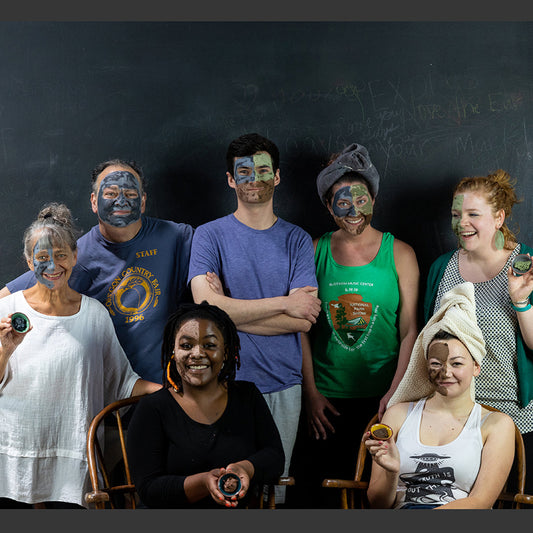
Clay masks that can naturally deeply clean your complexion, are a simple way to give your skin a boost and some TLC without getting regular facials.
Read Post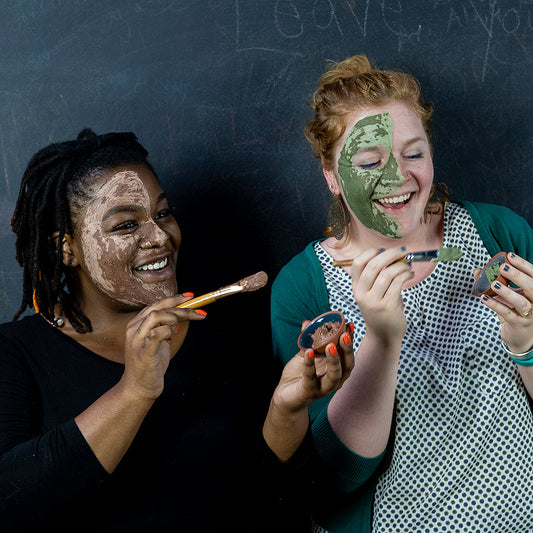
Clay facial masks are an easy way to pamper yourself and invigorate your skin. Creating an application technique that works for your skin will get you one step closer to a beautiful complexion.
Read Post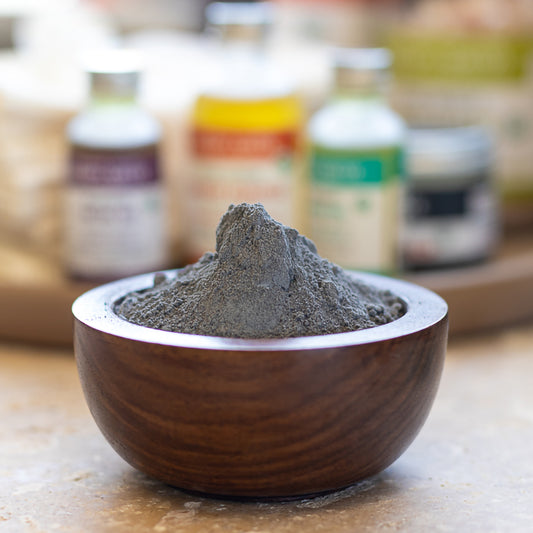
Clay powders can be mixed with many ingredients for an added benefit or just for fun. Many websites provide recipes for additives, but they do not understand the science of clay.
Read Post